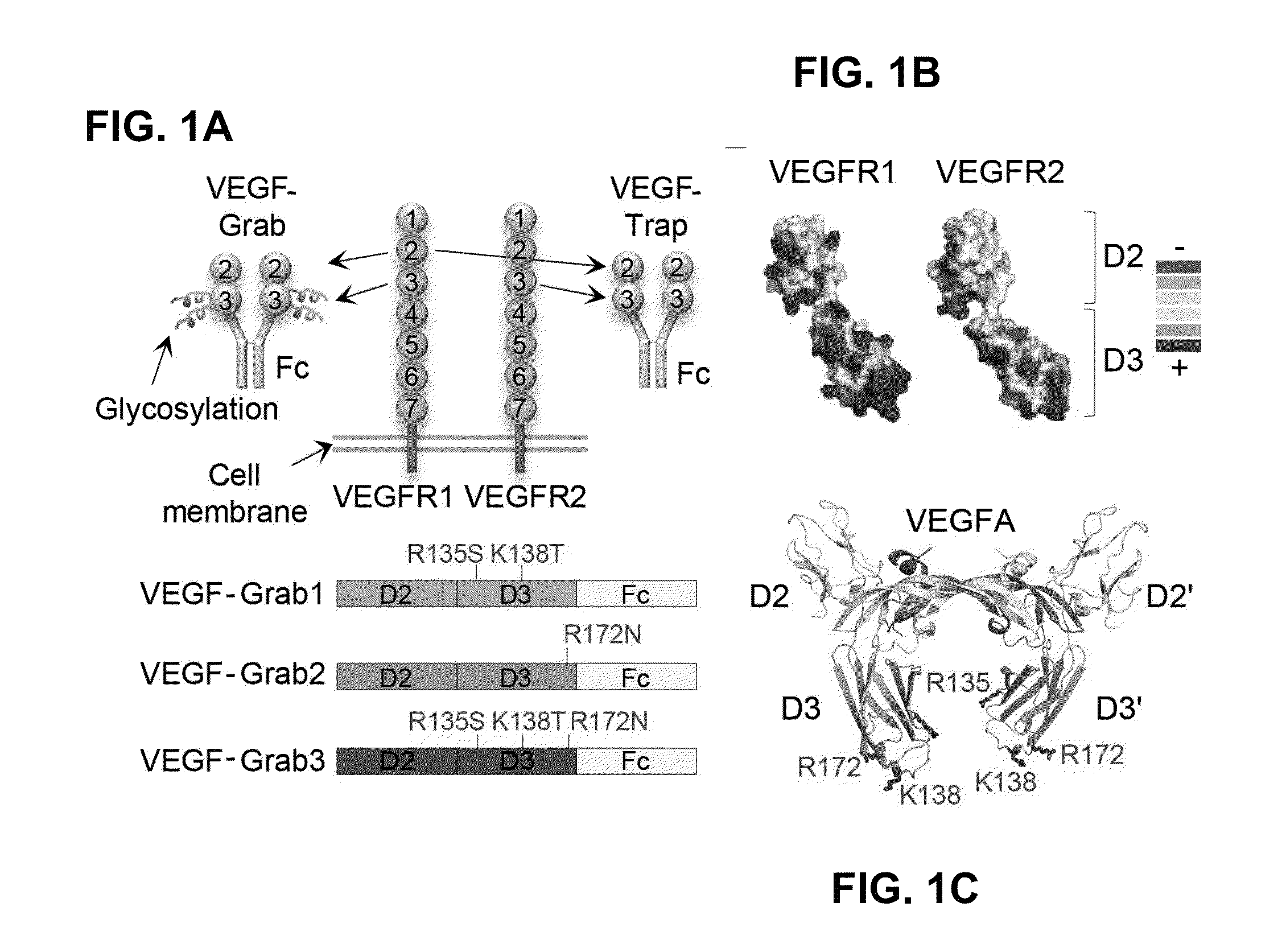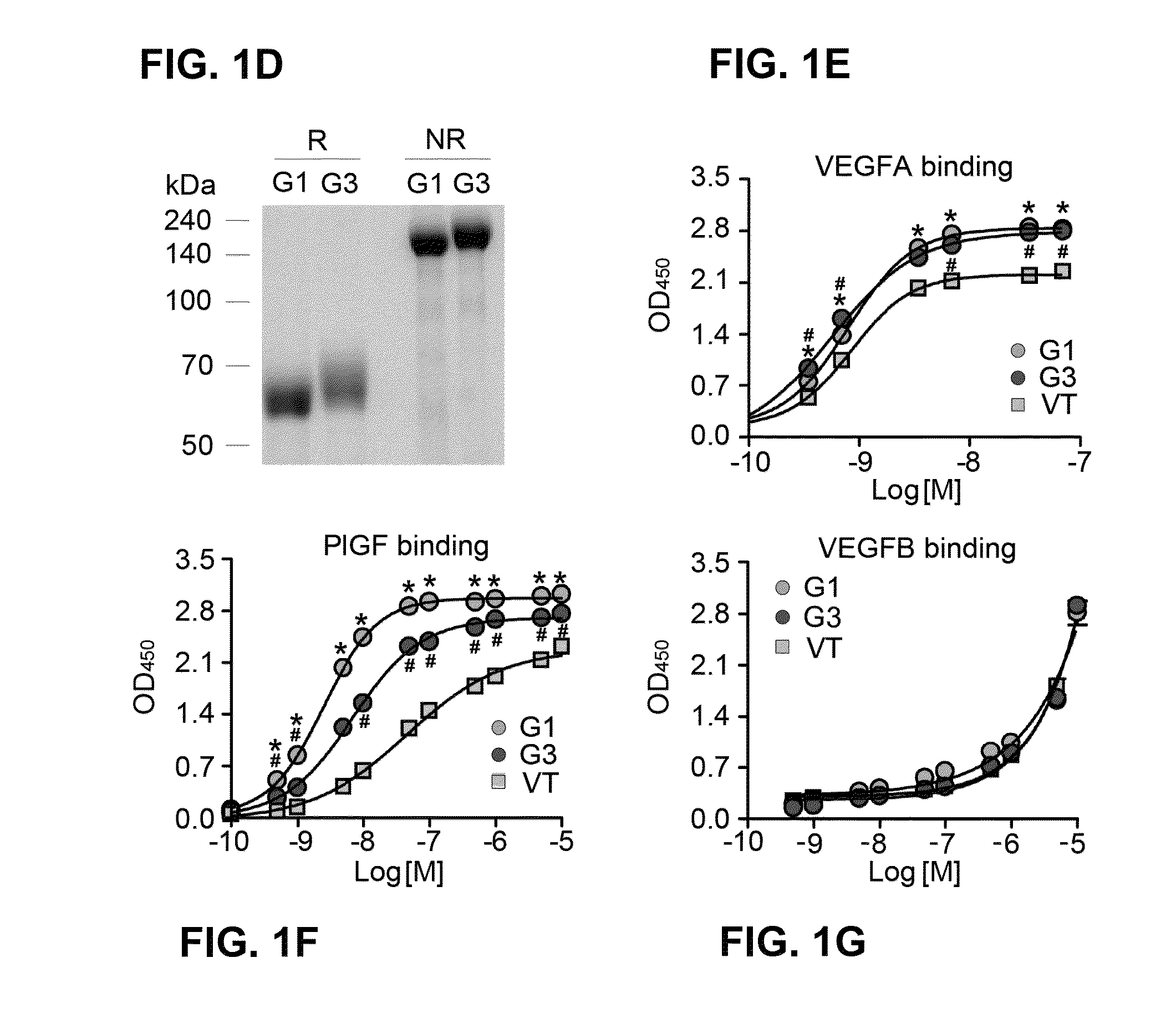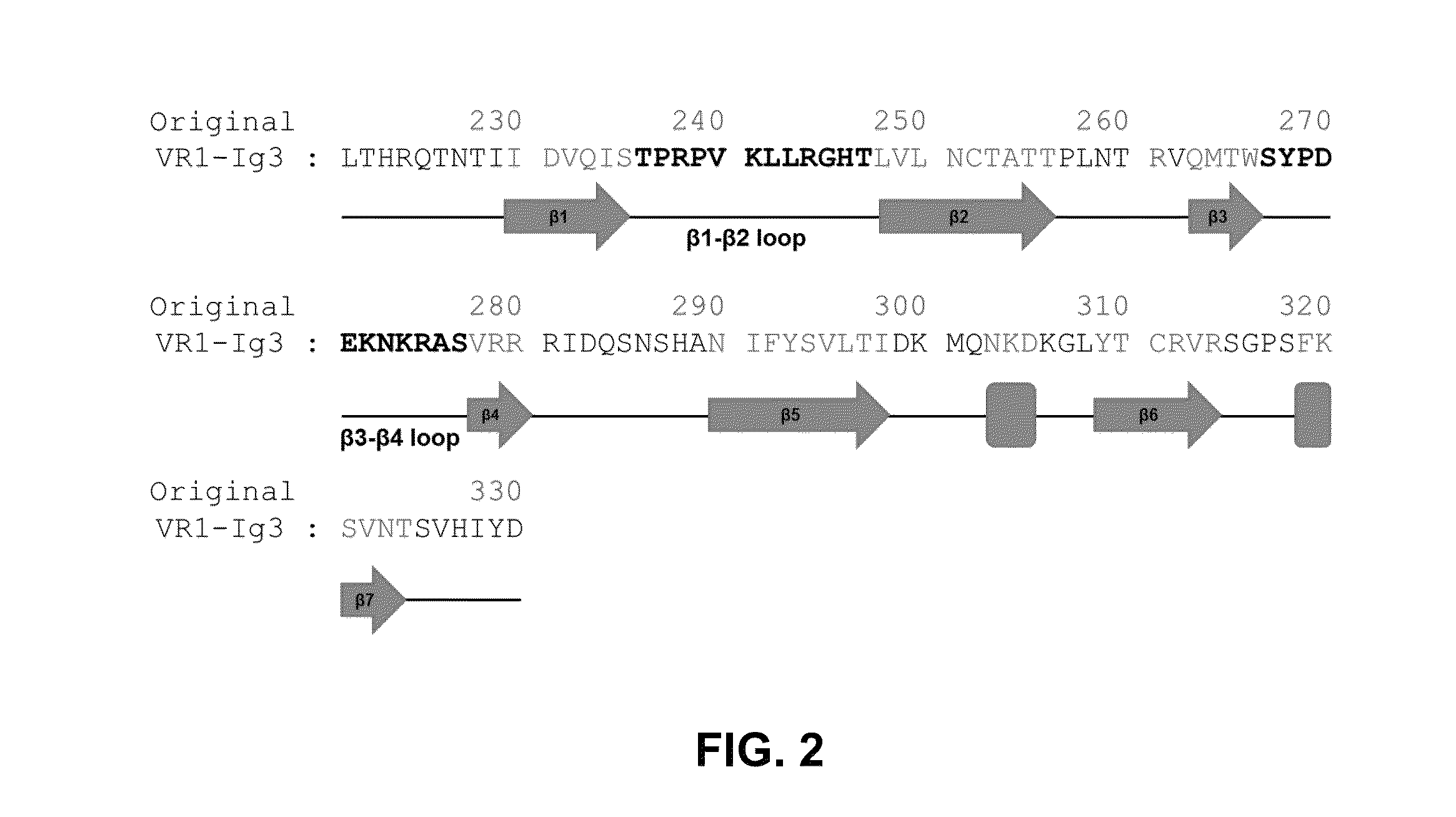Method of treating eye disease using glycosylated VEGF decoy receptor fusion protein
- Summary
- Abstract
- Description
- Claims
- Application Information
AI Technical Summary
Benefits of technology
Problems solved by technology
Method used
Image
Examples
example 1
Materials and Methods
Example 1.1
Cell Lines
[0159]All cell lines for this studies (HUVEC (CC-2519, Lonza), dhfr-deficient CHO cells (CRL-9096, ATCC) and LLC cells (CRL-1642, ATCC)) have not been cultured for longer than 6 months.
example 1.2
Generation of Recombinant Proteins
[0160]Human VEGFR1 (amino acid residues 132-331) fused to human Fc domain of IgG1 (referred to as Fc) was cloned into the pCMV-dhfr vector. A series of VEGF-Grabs were generated by site directed mutagenesis. VEGF-Grabs constructs were transfected into dhfr-deficient CHO cells. Transfected cells were selected by G418, and genes were amplified by gradually increasing methotrexate treatment (0.001-0.5 μM). The cells were then grown in HyQSFM4CHO (ThermoScientific) media containing 0.5 μM methotrexate. VEGF-Grabs and VEGF-Trap were purified by protein A-sepharose affinity chromatography. Purified proteins were quantitated using Bradford assay and confirmed by Coomassie blue staining after SDS-PAGE.
example 1.3
Isoelectric Focusing Analysis
[0161]To analyze isoelectric points of VEGF Grabs (G1 and G3) and VEGF Trap (VT), 5 μg of proteins and IEF marker (Novex) were loaded on IEF gels ranging pH 3-10 (Novex) and run at 100V for 1 hr, 200V for 1 hr and 500V for 30 min. After electrophoresis, gels were stained with silver staining kit (Elpis).
PUM
 Login to View More
Login to View More Abstract
Description
Claims
Application Information
 Login to View More
Login to View More - R&D
- Intellectual Property
- Life Sciences
- Materials
- Tech Scout
- Unparalleled Data Quality
- Higher Quality Content
- 60% Fewer Hallucinations
Browse by: Latest US Patents, China's latest patents, Technical Efficacy Thesaurus, Application Domain, Technology Topic, Popular Technical Reports.
© 2025 PatSnap. All rights reserved.Legal|Privacy policy|Modern Slavery Act Transparency Statement|Sitemap|About US| Contact US: help@patsnap.com



